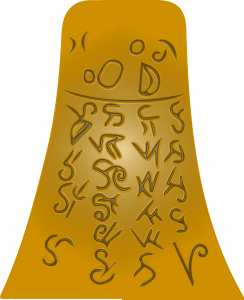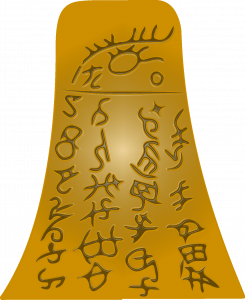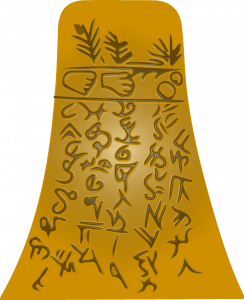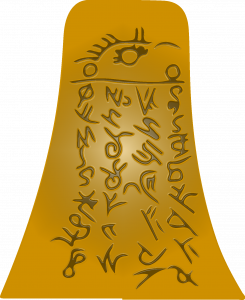The Kinderhook Plates are a very important part of LDS church history.
In 1843 six brass plates – bell shaped – were found in a dug-up mound in Kinderhook, Illinois witnessed by nine individuals.
That could support the evidence for the Brass Plates of the Book of Mormon.
That is what those men thought when they saw the plates. The plates had an ancient appearance with writing on them that looked like hieroglyphics.
In fact, when the plates were taken and shown to Joseph Smith, he remarked that the figures or writing on them was similar to what was on the Book of Mormon brass plates.
Smith claimed, that by the help of revelation he would be able to translate those plates.
The story of finding the Kinderhook Plates and drawings of the six plates was published in the Times and Seasons, which was the Church’s official newspaper. Joseph was an editor and surely would not have allowed the story to be printed if it wasn’t true.




In time, Joseph Smith claimed that he actually did translated a portion of the plates.
How do we know for a fact that he translated the plates?
It comes from William Clayton’s diary, who was Joseph Smith’s private secretary.
In the LDS History of the Church, vol. 5, page 372, Joseph Smith is documented as saying, “I insert fac-similes of the six brass plates found near Kinderhook. I have translated a portion of them and find they contain the history of the person with whom they were found. He was a descendant of Ham, through the loins of Pharaoh, king of Egypt, and that he received his kingdom from the Ruler of heaven and earth.”
Thirteen years later, on April 25, 1856, W. P. Harris, who was one of the nine witnesses to the discovery of the plates, wrote a letter in which he admits the plates were forgeries. He states that “I was present with a number at or near Kinderhook and helped to dig at the time the plates were found. I made an honest affidavit to the same. Since that time, Bridge Whitten said to me that he cut and prepared the plates and he and R. Wiley engraved them themselves. Wilbourn Fugate appeared to be the chief, with R. Wiley and B. Whitten (The Book of Mormon? by James D. Bales, pp. 95-96).
How do we know that W. P. Harris who wrote that letter was telling the truth about the plates being a forgery?
Because on June 30, 1879, Wilbourne Fugate, who was mentioned as chief of the nine witnesses, wrote a letter in which he admitted his part in the hoax. That letter can be found in the LDS September 1962 Improvement Era magazine entitled, “Letter of W. Fugate, as cited in The Kinderhook Plates” by Welby W. Ricks.
Mr. Fugate states, “I received your letter in regard to those plates and will say in answer that they are a humbug, gotten up by Robert Wiley, Bridge Whitten and myself. We read in Pratt’s prophecy that ‘Truth is yet to spring out of the earth.’ We concluded to prove the prophecy by way of a joke.”

